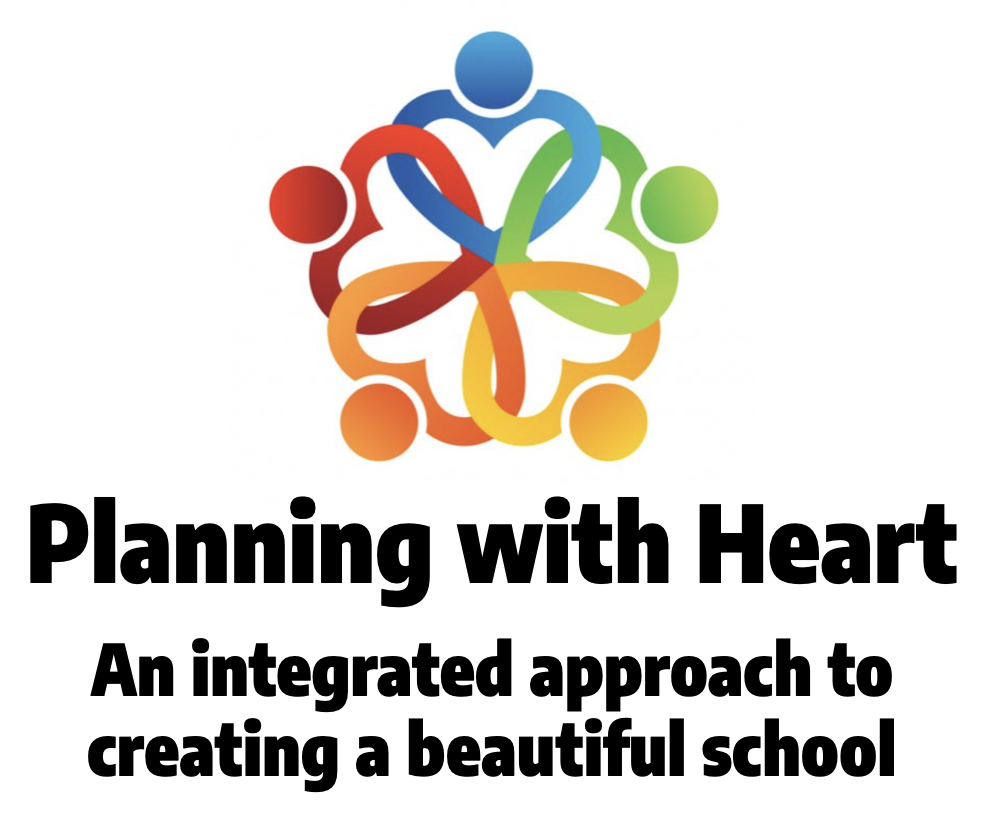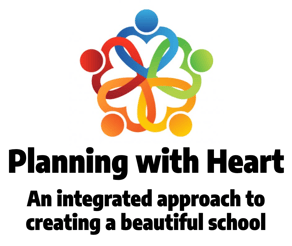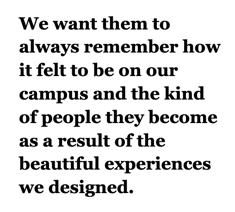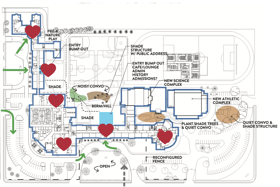
Planning with Heart to Create a Beautiful Campus and Culture
 Did you know that a beautiful school has a harmony that uplifts the soul? It's true.
Did you know that a beautiful school has a harmony that uplifts the soul? It's true.
We've witnessed the difference.
And, this isn't an experience that is limited to an elite few. Using an integrated approach to planning and design, a dynamically engaging experience can be created that inspires greater learning and powerful community moments.
This doesn't require some "cutting edge" innovation that's full of promises but wholly misses the mark. Instead, we're applying a proven method of design that also works wonders for schools.
Most of us use the term community or family to describe our school, and we have to deal all that comes with such a gathering of human beings. Families can be messy, with inevitable issues that can distract from our goals and leave us with some wonderful memories and some unpleasant ones too.
The memories aren't just about the people, but also the places the family inhabits, the smells, the sensations. Feelings create the strongest memories and associations.
One recent night over dinner, Alan Metcalfe and I were reflecting on our own family experiences growing up and the various ways those experiences shaped our lives and led us to where we are today. It was a reminder that relationships easily get complicated, requiring thoughtful design and discipline to achieve the desired experiences and outcomes.
The foundation of an authentically excellent school is a culture based on a strongly held mission combined with a shared set of behavioral core values that are consistently supported by the organizational structure, leadership decisions, and physical environment.
Three factors pose a thread to healthy school culture.
1. Silos are killers of culture.
The temptation to isolate and put up walls of protection is strong among educators. Schools are too often limited by the decisions of educators whose leadership has become compromised through insecurity and isolation. We are at our best when our collective talents are actively engaged together. Everything we hope to achieve in this work and in this life is achieved in relationship with other people.
2. Dysfunction undermines trust.
Dysfunction thrives in schools where communication is poor and undisciplined, conflict is pervasive and unchecked, and commitments are shallow words that lack follow through and accountability. We have to be consistent communicators to build trust and engagement. That requires proactively resolving conflict, and delivering on our commitments with consistent follow up and follow through.
3. Complacency puts everyone at risk.
The risks of complacency increase with success. Enrollment growth, for example, can often produce a "false positive" about our organizational health and competitive strength. It hardens our confirmation bias, where we seek, favor, and use information that confirms our pre-existing opinions on why we're so good. The signs of complacency and misplaced pride are distinct.
- We stop striving for excellence.- We stop learning.
- We stop seeking opportunities to grow.
- We stop building our network of influence.
- We stop paying attention to the details.
As educators, we may individually have our own music, our own rhythm. But the greater joy of school culture and life is experienced through an integrated harmony that is able to adapt as situations change, staying in tune with those around us.
The real secret to school transformation is creating a beauty throughout the campus. The fundamental principles of education design depend on harmony and balance because excellent schools are never the result of functional design alone, but rather are the product of educators who found a graceful rhythm that connects with the heart and soul of the organization.
Leveraging the power of an Interpretive Master Plan (IMP) is one way education leaders are extending the impact of their strategic plan to elevate the physical environment so that it contributes to a beautiful culture. IMP is a continuation of a School Growth Plan (which focuses significantly on culture and capacity building) that provides us with the tools to realize those often confounding directives imbedded in the goals.
education leaders are extending the impact of their strategic plan to elevate the physical environment so that it contributes to a beautiful culture. IMP is a continuation of a School Growth Plan (which focuses significantly on culture and capacity building) that provides us with the tools to realize those often confounding directives imbedded in the goals.
IMP has been used by museums and parks for over 75 years, producing a deep dive into discussions with the real users of our facilities, asking probing questions of students, parents, prospective families, staff, board and even neighbors. We have conversations about our institution’s cultural moments, significant places, big events and traditions in the school year, and importantly, WHERE these events happen.
These interviews are combined with walkthroughs throughout the campus to evaluate each and every space so that we can define the physical heartbeat places—places that speak specifically to who we are and confirm our mission. Narratives are then created about how we want each visitor to experience our school, especially those central connecting points.
 Such an approach energizes the fabric of our existing facilities while also helping us plan for new spaces and buildings. This is a powerful way to more effectively utilize our physical environment to build culture and community.
Such an approach energizes the fabric of our existing facilities while also helping us plan for new spaces and buildings. This is a powerful way to more effectively utilize our physical environment to build culture and community.
Each school has a heart and soul. Let's be careful not to miss the opportunity to create something beautiful that our people will remember for the rest of their lives, embedding those memories in them how engaging and inspiring it felt to be on our campus.
We want them to always remember how it felt to be on our campus and the kind of people they become as a result because our school’s character and culture will be the single most important piece they carry with them.
We'll share an infographic in the next blog post that provides more information on Interpretive Master Planning.

.png?width=1000&height=199&name=SG-Logo3-Transparent-1000x199px%20(1).png)




